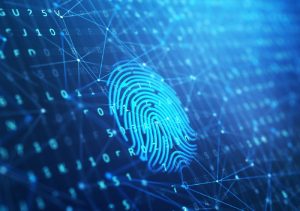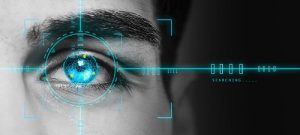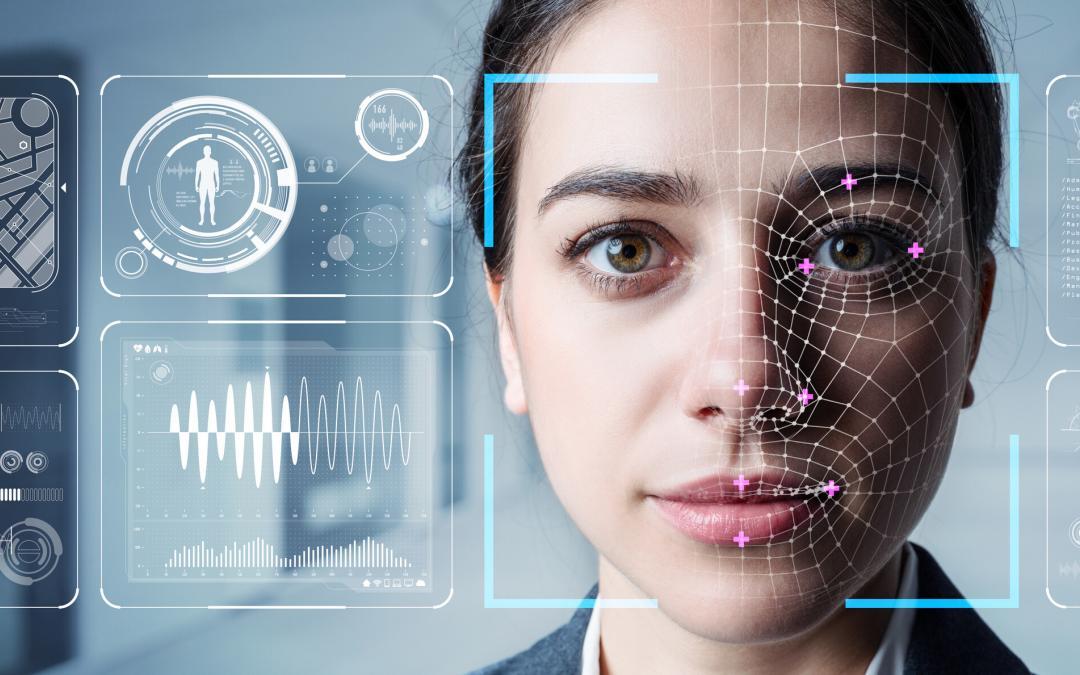What is Biometrics and How is it used in Security?
Biometrics is evolving as an advanced layer for many personal and corporate security systems. This may seem like a no-brainer despite your unique biological identities and behaviors. However, biometric identity has made many cautious about using it as an independent authentication.
Modern cybersecurity focuses on reducing the risks of this powerful security solution: Traditional passwords have long been a weakness of security systems. Biometrics intends to address this by linking proof of identity to the body and behavior patterns.
In this article, we will look at how to use biometric security with biometrics. To help you sort things out, we’ll answer some common biometric questions:
- What is the meaning of biometrics?
- Definition of Biometric data?
- What is a biometric scanner?
- What are the risks of biometric security?
- How can we make biometrics safer?
Let’s start with the basics.
What is Biometrics?
For a quick definition of biometrics: Biometrics are biological measurements – or physical properties – that can be used to identify individuals. For example, fingerprint mapping, face recognition, and retina scans are all forms of biometric technology, but these are just the most well-known options.
Biometric data at your fingertips and privacy challenges
People are seeing a growing interest among government agencies and the private sector in adopting systems that automatically use biometric features to identify or authenticate individuals. But whether the fingertip, face, or iris is being scanned, what is being collected is a person’s identifiable information.
The government is expanding the use of biometrics. For example, iris images are used in CANPASS and NEXUS border clearance programs, fingerprints and iris scans to control access to safe areas at airports, and digital facial images are recommended for e-passports.
Originally, the word biometric meant the application of mathematical measurements to biology. Today, the term refers to various techniques, devices, and systems that enable machines to identify, verify, or authenticate individuals.
Such systems measure and analyze individuals’ physical and behavioral characteristics, such as facial features, sound patterns, fingerprints, palm prints, finger and vein patterns, eye structures (iris or retina), or gait.
Biometric data is collected at a starting point called registration time. When new data is collected and compared with stored records, identities can be created or verified.
The most common biometric example is an identification photo used on a passport, driver’s license, or health card. An image of a person’s face is captured and stored to be later compared to another image or a living person.
Biometric technology is often used to identify people or verify that they can do certain things, such as driving a car or accessing a safe or restricted area.
Researchers claim that ear shape, sitting and walking, unique body odor, hand veins, and even facial contractions are other unique features. These features further define biometrics.
Three types of biometric security
Biometrics, while they can have other uses, are often used in security, and you can label biometrics in three groups:
- Biological biometrics
- Morphological biometrics
- Behavioral biometrics
Physical biometrics uses traits at the genetic and molecular levels. These may include features such as your DNA or blood that may be assessed through a sample of your body fluids.
Morphological biometrics include the structure of your body. More physical features such as your eyes, fingerprints, or face shape can be mapped for use with security scanners.
Behavioral biometrics are based on unique patterns for each individual. If you follow these patterns, how you walk, talk or even type on the keyboard can indicate your identity.
Biometric security tasks
Biometric identification plays an increasing role in our daily security. Physical characteristics are relatively constant and individual – even in the case of twins. Each individual’s unique biometric identity can be used to replace or at least enhance password systems for computers, telephones, and rooms and buildings with limited access.
Once biometric data is obtained and mapped, it is stored to match future access attempts. Most of the time, this data is encrypted and stored on the device or a remote server.
Biometric scanners are hardware used for biometric recording for authentication. These scans are compatible with the stored database to confirm or deny access to the system.
In other words, biometric security means that your body becomes the “key” to unlock your access.
Biometrics are mainly used because of two major advantages:
- Ease of use: Biometrics are always with you and can not be lost or forgotten.
- It is difficult to steal or impersonate: Biometric information can not be stolen like a password or key.
While these systems are not perfect, they hold great promise for the future of cybersecurity.

Examples of biometric security
Here are some common examples of biometric security:
- voice recognition
- Fingerprint scanning
- Face Recognition
- Iris detection
- Heart rate sensors
In practice, biometric security has already been used in many industries.
Advanced biometrics are used to protect sensitive documents and valuables. Citibank is currently using voice recognition, and the British bank Halifax is testing heart rate monitors to identify customers. Ford is even considering biometric sensors in cars.
Biometrics are included in electronic passports worldwide. In the United States, e-passports have chips that contain digital photographs of a person’s face, fingerprint, or iris and technologies that prevent the chip from being read – and deleted – by unauthorized data readers.
As these security systems are set up, we see the pros and cons appear in the moment.
Are Biometric Scanners Safe? Improvements and concerns
Biometric scanners are becoming increasingly sophisticated. You can even find biometrics in phone security systems. For example, the face recognition technology on the Apple iPhone X shows 30,000 infrared dots on the user’s face to confirm the user’s identity by matching the pattern. According to Apple, the probability of an identity mistake with the iPhone X biometrics is one in a million.
Biometric – Identity and privacy concerns
Biometric authentication is easy, but privacy advocates fear that biometric security will undermine privacy. The concern is that personal data can be collected easily and without consent.
Face recognition is part of everyday life in Chinese cities, where it is used for casual shopping, and London is famous for its CCTV cameras. New York, Chicago, and Moscow are now linking their cities’ CCTV cameras to face-recognition databases to help local police fight crime. Upgrading the technology, Carnegie Mellon University is developing a camera that can scan people’s irises in crowds from 10 meters.
Biometric Data Security Concerns
The more immediate problem is that hackers target personal databases. For example, when the US Office of Personnel Management was hacked in 2015, cybercriminals exposed the identity of 5.6 million government employees with their fingerprints.
Storing biometric data on a device – such as an iPhone TouchID or Face ID – is safer than storing it with a service provider, even when the data is encrypted.
This risk is similar to a password database in which hackers may infiltrate the system and steal data that is not effectively secure. However, the consequences are significantly different. If the password is compromised, it can be changed. Biometric Data in the contract remain the same forever.
Ways to protect the biometric identity
With the dangers of privacy and security, extra protection must be used in biometric systems.
Unauthorized access becomes more difficult when systems require multiple authentication tools, such as life detection (blinking) and matching encrypted samples with users within encrypted domains.
Some security systems also have different ages, gender, and height in biometric data to neutralize hackers.
Biometrics is a good alternative to usernames as a two-factor authentication strategy. Which includes:
- What you are (biometric)
- What do you have (like a hardware password) or what do you know (like a password)
Two-step authentication creates a powerful combination and is necessary, especially as IoT devices are increasing. With layering protection, secure Internet devices become less vulnerable to data breaches. In addition, using a password manager to store any traditional password can give you more protection.

Important points in biometrics
In short, biometrics is a growing way to authenticate cybersecurity systems.
Combining the protection of your physical or behavioral signatures with other authentications offers some of the strongest known security. For now, at least, it’s better than using a character-based password as a standalone authentication.
Biometric technology offers very compelling security solutions. Despite the dangers, the systems are comfortable and difficult to replicate. In addition, these systems will continue to develop for a long time.
In short, the physical and behavioral characteristics that are recorded in a biometric system (for example, a person’s face, fingerprint, or voice) are referred to as “biometric properties.” Unlike personal data used in conventional (non-biometric) identification documents, these features can serve as the basis for robust and reliable identification systems.
For example, many biometric features can be very distinct, with little or no overlap between individuals. Fingerprint, iris, and DNA are the most distinctive features, while facial features may be more similar in different people.
Some physical features, such as fingerprints and irises, are also stable over time and difficult to change. In contrast, other biometric features, such as faces, change over time and can be altered through cosmetics, disguises, or surgery.
One of the concerns is the covert collection and use of biometric data simply because the data is available to the public.
Conclusion
The biometric systems used to manage access to an application or service may include limiting options and thus eroding control. For example, to keep a passport, one must agree to use a face image.
Government use of biometric systems adds more dimension to this erosion control. In many forms of government interaction, individuals have no choice but to give up sensitive personal information. Personal data is usually the currency exchanged for government programs, services, or rights.

